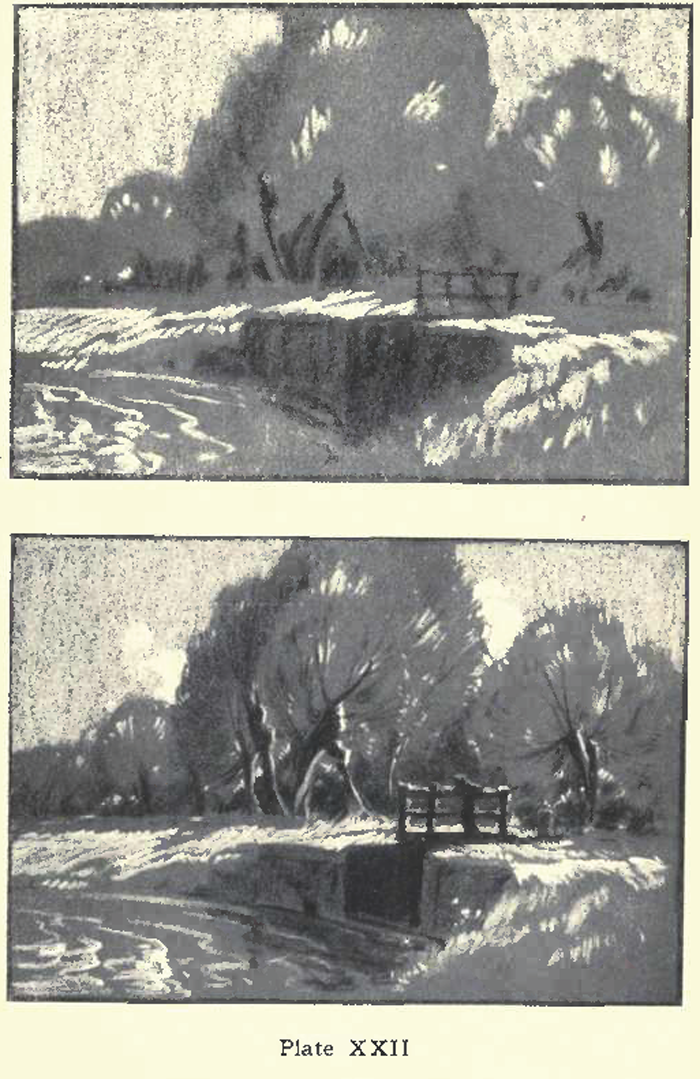
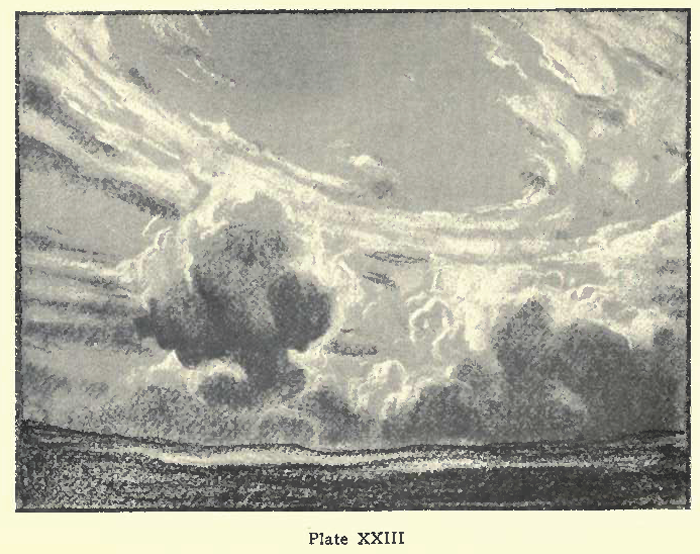


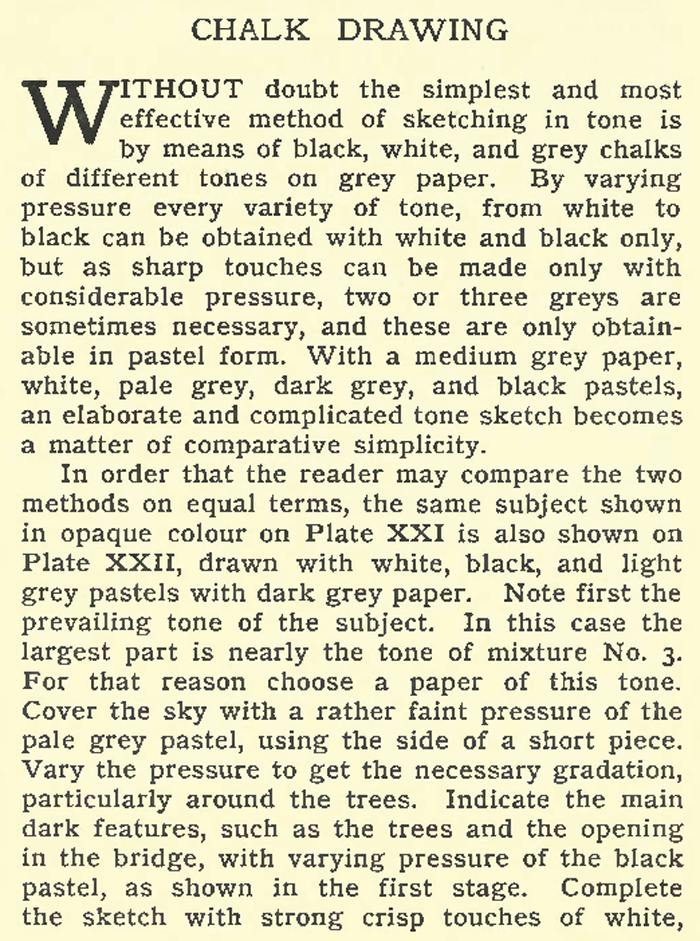
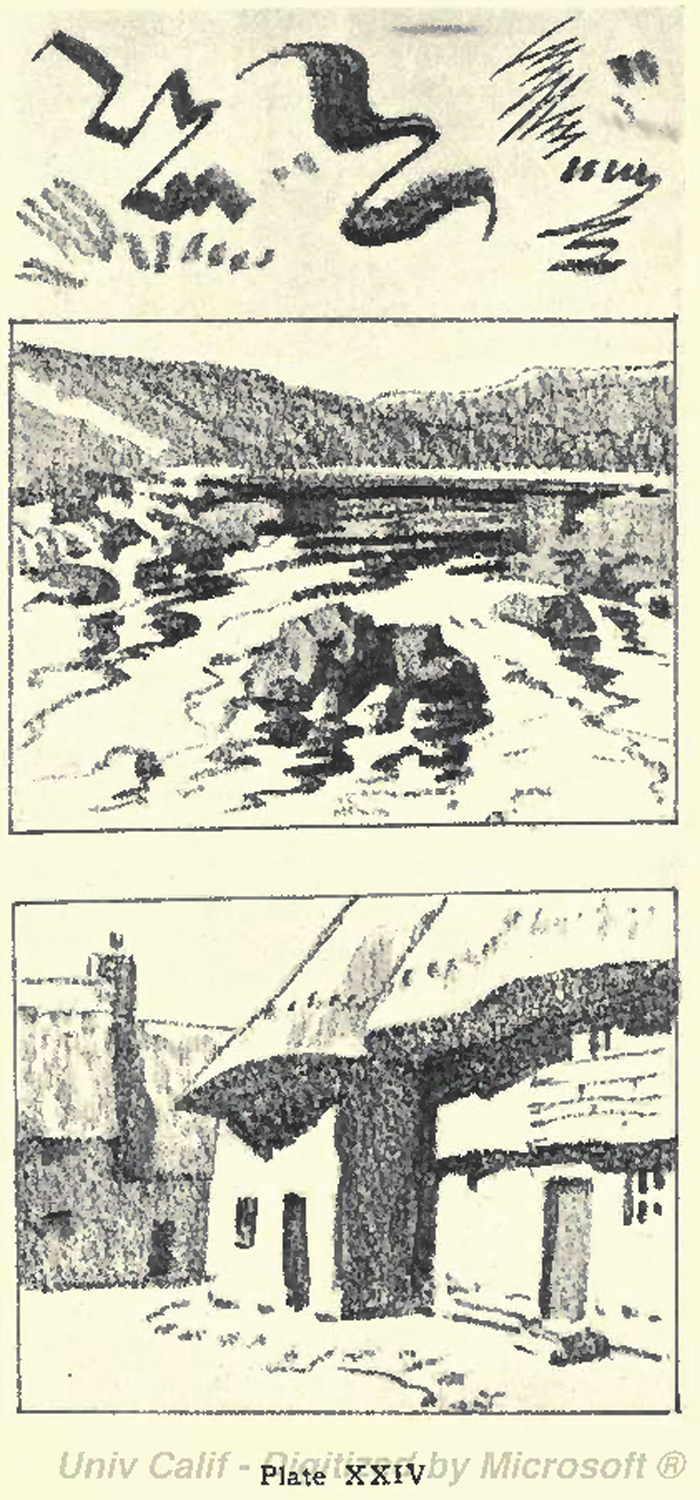
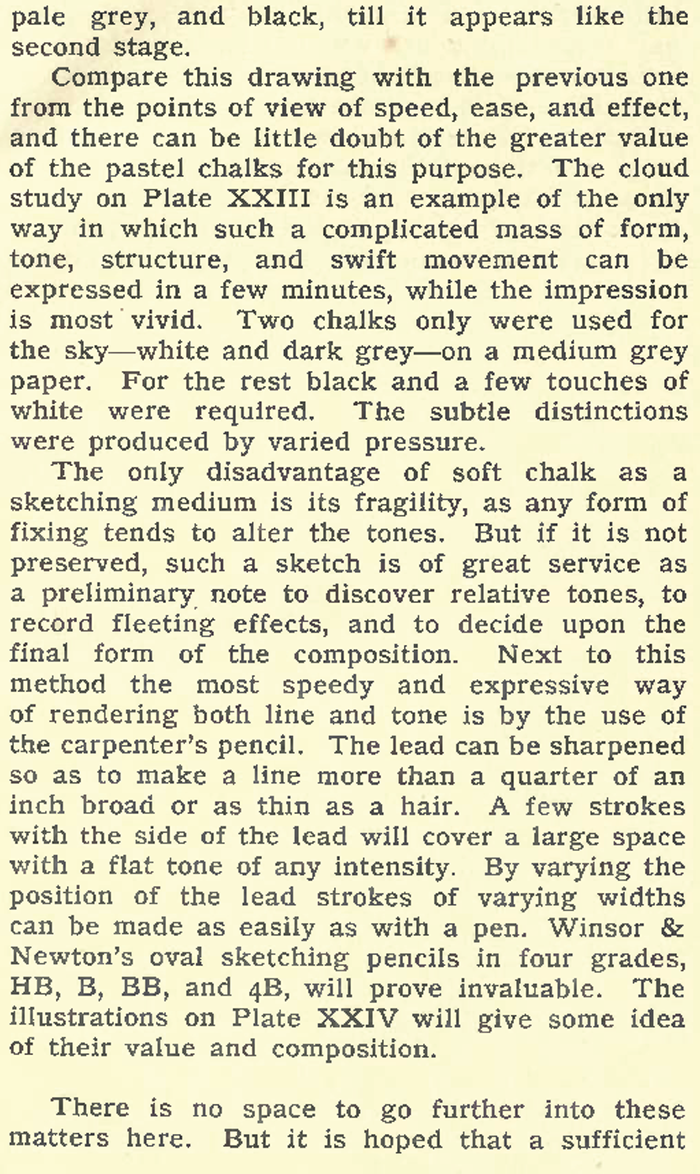
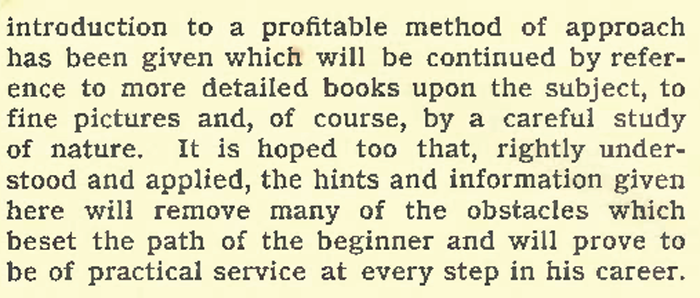
CHALK DRAWING
WITHOUT doubt the simplest and most effective method of sketching in tone is by means of black, white, and grey chalks
of different tones on grey paper. By varying pressure every variety of tone, from white to black can be obtained with white and black only, but as sharp touches can be made only with considerable pressure, two or three greys are sometimes necessary, and these are only obtainable in pastel form. With a medium grey paper, white, pale grey, dark grey, and black pastels, an elaborate and complicated tone sketch becomes a matter of comparative simplicity.
In order that the reader may compare the two methods on equal terms, the same subject shown in opaque colour on Plate XXI is also shown on Plate XXII, drawn with white, black, and light grey pastels with dark grey paper. Note first the prevailing tone of the subject. In this case the largest part is nearly the tone of mixture No. 3. For that reason choose a paper of this tone. Cover the sky with a rather faint pressure of the pale grey pastel, using the side of a short piece. Vary the pressure to get the necessary gradation, particularly around the trees. Indicate the main dark features, such as the trees and the opening in the bridge, with varying pressure of the black pastel, as shown in the first stage. Complete the sketch with strong crisp touches of white,
Univ Calif -1%ie:kyfikiby Microsoft
Univ Calif - Digitized by Microsoft
pale grey, and black, till it appears like the second stage.
Compare this drawing with the previous one from the points of view of speed, ease, and effect, and there can be little doubt of the greater value of the pastel chalks for this purpose. The cloud study on Plate XXIII is an example of the only way in which such a complicated mass of form, tone, structure, and swift movement can be expressed in a few minutes, while the impression is most vivid. Two chalks only were used for the sky—white and dark grey—on a medium grey paper. For the rest black and a few touches of white were required. The subtle distinctions were produced by varied pressure.
The only disadvantage of soft chalk as a sketching medium is its fragility, as any form of fixing tends to alter the tones. But if it is not preserved, such a sketch is of great service as a preliminary note to discover relative tones, to record fleeting effects, and to decide upon the final form of the composition. Next to this method the most speedy and expressive way of rendering both line and tone is by the use of the carpenter's pencil. The lead can be sharpened so as to make a line more than a quarter of an inch broad or as thin as a hair. A few strokes with the side of the lead will cover a large space with a flat tone of any intensity. By varying the position of the lead strokes of varying widths can be made as easily as with a pen. Winsor & Newton's oval sketching pencils in four grades, HB, B, BB, and 4B, will prove invaluable. The illustrations on Plate XXIV will give some idea of their value and composition.
There is no space to go further into these matters here. But it is hoped that a sufficient
introduction to a profitable method of approach has been given which will be continued by reference to more detailed books upon the subject, to fine pictures and, of course, by a careful study of nature. It is hoped too that, rightly understood and applied, the hints and information given here will remove many of the obstacles which beset the path of the beginner and will prove to be of practical service at every step in his career.